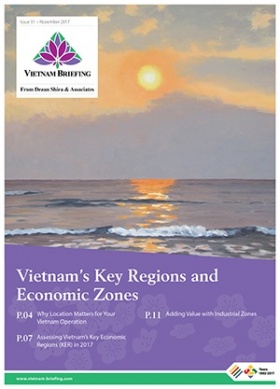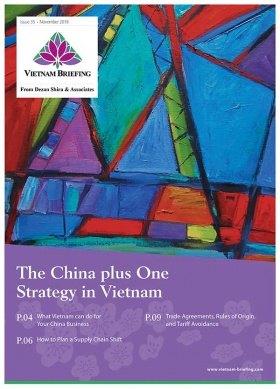Foreign Firms Continue to Dominate Vietnam’s Online Tourism Industry
The rise in low-cost carriers, internet penetration, and smartphone adoption has led to a rapid growth in the online tourism industry, which is dominated by foreign online travel agencies (OTAs). When compared to foreign firms, domestic firms continue to face issues such as the lack of technology solutions, the scale of partnerships with hotels, and lack of funding, which allows foreign OTAs to offer higher discounts and bigger sales promotion schemes to attract tourists.
Tourism industry
Last year, the Vietnamese government passed the Tourism Law, focusing on the development of the industry. Tourism has been identified as a key industry for Vietnam, due to its rapid growth and growing contribution to the country’s GDP. According to a June 2017 United Nations World Tourism Organization report, Vietnam’s tourism growth was the seventh fastest globally and was the only country in Southeast Asia to feature in the top 10.
By 2020, the tourism industry’s revenues in Vietnam are predicted to reach US$35 billion, while the number of foreign tourists will rise to 20 million. In addition, the industry’s contribution to the GDP will grow from seven percent in 2017 to 10 percent in 2020.
2017
In 2017, Vietnam’s foreign tourist arrival grew by 29.1 percent to 12.9 million. This growth pushed the industry’s turnover to US$23 billion (VND515 trillion), an increase of 25.1 percent. The industry accounted for seven percent of the national GDP.
Arrivals from Asia and Europe grew the highest at 34.4 percent and 16.6 percent respectively.
2018
In the first four months of 2018, there were 5.5 million foreign visitors, an increase of 29.5 percent compared to the same period last year. The government is targeting 15 to 17 million foreign visitors in 2018.
Visitors from China grew by 39.7 percent year-on-year, to 1.77 million, while arrivals from South Korea stood at 1.17 million, growing by a staggering 67 percent year-on-year. Outside of Asia, the major sources for tourists were US, Russia, and Australia with each growing between 10 and 15 percent.
Online tourism
According to the Vietnam E-commerce Association’s (VECOM) Vietnam E-business Index 2018, the booking rate through OTAs increased by 30 percent in 2017, while the online travel revenue grew by 50 percent when compared to 2016.
Domestic firms account for only 20 percent of the market, while the rest is dominated by foreign agencies such as Trivago, Booking, and Agoda. The major growth drivers for foreign firms include access to capital, partnerships with hotels, and promotional programs such as discounts/offers.
With the rise in internet penetration and smartphone penetration, tourists will continue to prefer OTAs to traditional travel agencies due to convenience, the range of properties, promotional offers, and easier payment methods. In 2018, 71 percent of foreign tourists heading to Vietnam searched for information online, while 64 percent booked their Vietnam tours online.
The online tourism market is predicted to grow from US$2.2 billion in 2015 to around US$9 billion in 2025.
Competing with foreign OTAs in areas such as capital, promotional offers, and marketing will be tough for domestic firms. However, they can focus on issues such as improving customer service, optimizing technology, and diversification of services such as providing transportation and tour guides, to remain competitive.
Vietnam Briefing is produced by Dezan Shira & Associates. The firm assists foreign investors throughout Asia from offices across the world, including in Hanoi and Ho Chi Minh City. Readers may write vietnam@dezshira.com for more support on doing business in Vietnam.
- Previous Article Thriving Consumer Lending Market in Vietnam
- Next Article Vietnam’s Three Cities to Join ASEAN Smart Cities Network































